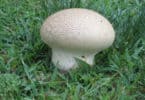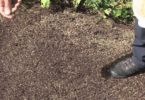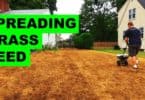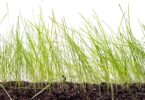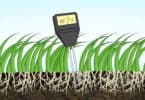By definition, weeds are invasive plants. When weeds are overtaking the lawn, it can seem like daunting task to remove all of the offenders. In some ways, the process of removing weeds without killing the lawn might be easier than you think, but it also takes time as weeds sprout all year long. For maximum effectiveness, the most serious weed removal chores are done in the spring and fall . Understanding the life-cycle makes weeds easier to eradicate.
Preemergent Weed Killers
Spring is the best time to use preventative weed and feed products. By combining fertilizer and herbicides, preemergents prevent weeds and get the lawn off to a good, healthy start. Preemergents kill crabgrass and other common weeds that sprout from seed every year. When the soil warms up to between 50 and 60 degrees, crabgrass seeds begin to sprout. Depending on your climate, preemergents should be applied between March and May or just before the lilacs begin to flower. Granular weed and feed and liquid “weed preventers” are both available. Although preemergent herbicides are harmless to actively growing lawns, overseeding and reseeding can’t be done at the same time. Applying preemergents in the late winter is the best way to cut down on the number of weeds that grow during spring and summer. Look for products that contain benefin, bensulide, DCPA, or other preemergent ngredients.
Selective Weed Killers
Dandelions, thistles, plantains, ground ivy, and many other weeds are present in lawns across the country. In some cases, these weeds can crowd out shallow-rooted lawn grass. Selective weed killers are formulated to eradicated hundreds of the worst weeds while leaving the lawn unharmed. 2,4-D, dicamba, dichlorprop and triclopyr are common herbicides that selectively kill broadleaf weeds. Products like Weed B Gone contain a combination of these ingredients to target a broader range of weeds. Although selective weed killers are great for removing weeds without killing the lawn, they aren’t the solution for every application. Because landscape plants are susceptible to selective weed killers, use a controlled application of a RoundUp around trees and shrubs. Glyphosate, most commonly known as RoundUp, is a broad spectrum herbicide that targets vegetation indiscriminately. These herbicides effectively kill tall fescue, quack grass, and other weeds that selective weed killers can’t handle.
When to Apply Weed Killers to the Lawn
Weeds are at their strongest when they’re flowering. Many common weeds like dandelions, plantains, and thistles will grow back after weed killer applications. For the best results, apply postemergent weed killers in the spring and fall when plants aren’t flowering. In spring, weeds are less likely to have a foothold and are easier to kill with one herbicide application. Fall is also a good time to kill weeds because they have less time to regenerate their strength. In some cases, weeds can be treated with glyphosate in the middle of summer when cool season grass is dormant. Apply preemergent weed killers before the lilacs bloom and again around Labor Day to prevent warm season annuals as well as cool season annuals that sprout over the winter. For perennials and weeds that get past preemergents, selective herbicides will kill weeds without killing the lawn. However, not all weed killers are safe on all types of lawn. St. Augustine grass, Floratam, centipede grass, and Bermuda grass are particularly susceptible to herbicides. Always read the labeling and make sure the product is safe of the type of lawn you have.
Related Youtube Video:
Pre-emergent Weed Control of Summer Annual Weeds
<>
References:
University Of Minnesota Extension: Weed Control In Lawns
<>
<>


